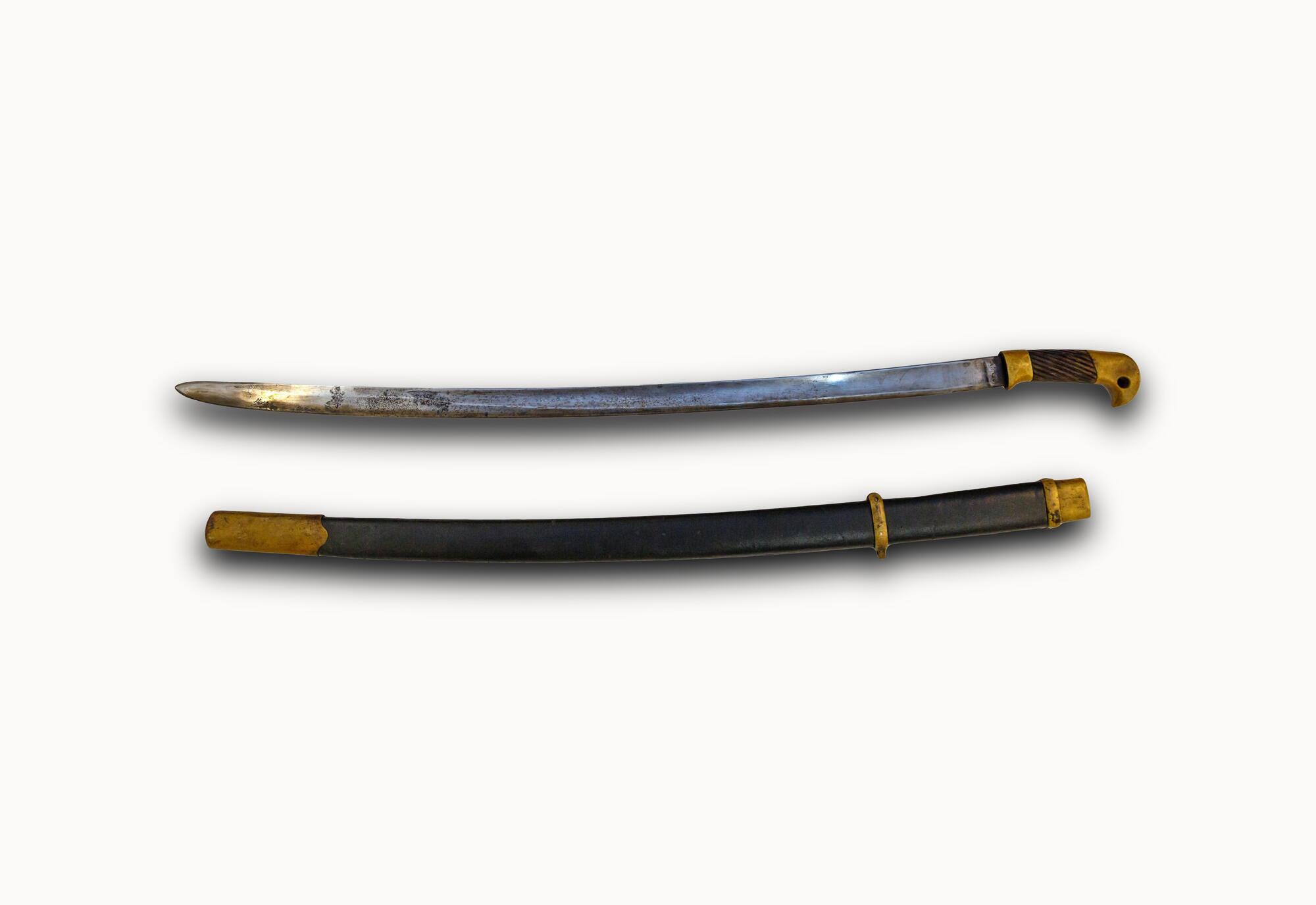A shashka is the most popular blade weapon among the Cossacks. The sheathed saber from the museum’s collection belonged to the Cossacks of lower ranks. It was produced by an unknown craftsman at the Zlatoust Arms Factory in 1915.
The shashka is believed to have been invented by Circassians and borrowed by Kuban and Terek Cossacks. It was known as early as the 12th and 13th centuries, but for a long time, it was regarded as an additional weapon, complementing the saber or sword. Initially, a shashka, which originated from a large knife, was worn high, almost under the left armpit with the edge uppermost. Only with the advent of firearms and the falling of large metal armor into disuse, the shashka started gradually replacing the saber.
This process started in the Caucasus and then developed in the nearby regions. The design of a shashka also changed: it became longer, heavier, and more curved. In the late 19th century, shashkas were officially adopted into use by the cavalry of the Russian army, the officers, and the members of gun detachments.
The 1881 reform replaced the Dragoon, cavalry, and infantry sabers with Dragoon and Cossack shashkas of a new unified pattern. There were two models: one for the officers and one for the lower ranks. The blade of a Cossack shashka had a relatively small curve, with the edge shifted to the center. It was double-edged.
The Cossack shashka for the lower ranks had a total length of 1,020 mm and a blade with a length of 870 mm. It had a straight handle separated from the blade by a cast bronze knucklebow. The sheathes of Cossack shashkas for the lower ranks did not have a bayonet attachment because it was not part of the munition of the Cossacks.
In 1917, a shashka was adopted into service by the Red Army, apart from the national units in the Caucasus that continued using their traditional weapons. Ten years later, a new model was introduced that was almost the same as the previous one.
In 1940, a new ceremonial shashka for generals was introduced which was replaced by a dirk by the middle of the century. Soon after the end of the Great Patriotic War, cavalry was abolished as a military unit, and the mass production of shashkas was stopped. It resumed in the late 1990s fueled by the active revival of Cossack traditions. Nowadays, a shashka is an integral component of the culture of Russian Cossacks and one of the main elements of the traditional Cossack costume.
The shashka is believed to have been invented by Circassians and borrowed by Kuban and Terek Cossacks. It was known as early as the 12th and 13th centuries, but for a long time, it was regarded as an additional weapon, complementing the saber or sword. Initially, a shashka, which originated from a large knife, was worn high, almost under the left armpit with the edge uppermost. Only with the advent of firearms and the falling of large metal armor into disuse, the shashka started gradually replacing the saber.
This process started in the Caucasus and then developed in the nearby regions. The design of a shashka also changed: it became longer, heavier, and more curved. In the late 19th century, shashkas were officially adopted into use by the cavalry of the Russian army, the officers, and the members of gun detachments.
The 1881 reform replaced the Dragoon, cavalry, and infantry sabers with Dragoon and Cossack shashkas of a new unified pattern. There were two models: one for the officers and one for the lower ranks. The blade of a Cossack shashka had a relatively small curve, with the edge shifted to the center. It was double-edged.
The Cossack shashka for the lower ranks had a total length of 1,020 mm and a blade with a length of 870 mm. It had a straight handle separated from the blade by a cast bronze knucklebow. The sheathes of Cossack shashkas for the lower ranks did not have a bayonet attachment because it was not part of the munition of the Cossacks.
In 1917, a shashka was adopted into service by the Red Army, apart from the national units in the Caucasus that continued using their traditional weapons. Ten years later, a new model was introduced that was almost the same as the previous one.
In 1940, a new ceremonial shashka for generals was introduced which was replaced by a dirk by the middle of the century. Soon after the end of the Great Patriotic War, cavalry was abolished as a military unit, and the mass production of shashkas was stopped. It resumed in the late 1990s fueled by the active revival of Cossack traditions. Nowadays, a shashka is an integral component of the culture of Russian Cossacks and one of the main elements of the traditional Cossack costume.



